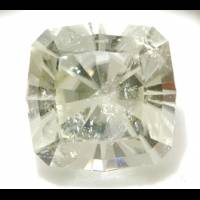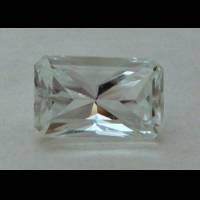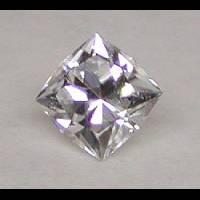Datolite

Roncari Quarry, East Granby, Hartford County, Connecticut, USA
2.40 carats
© Rarestone.com
Datolite can be yellow, brown, light green, colourless, pink, red and violet. It forms prismatic crystals and nodular masses. Transparent crystals are faceted into brilliant stones and opaque massive material is cut into cabochons. Facet grade rough rarely exceeds 2 g.
Datolite Gemstones by Colour
This table shows the variety of hues this gemstone can be found in. Click on a photo for more information.
Datolite Gemstones by Size
This table shows distribution of Datolite gemstone sizes that are listed on this site. This can give a good indication as to the general availability of this gemstone in different sizes.
Contributed photos
Lightest:0.26 cts
Heaviest:7.85 cts
Average:2.18 cts
Total photos:12
Do you have a larger Datolite? Why not upload a photo?
| General Information | |||||||||||||||||||
|---|---|---|---|---|---|---|---|---|---|---|---|---|---|---|---|---|---|---|---|
| Chemical Formula |
| ||||||||||||||||||
| Physical Properties of Datolite | |||||||||||||||||||
| Mohs Hardness | 5 to 5.5, Blue Chart Gem Identification (2010) More from other references | ||||||||||||||||||
| Specific Gravity | 2.90 to 3.00, Blue Chart Gem Identification (2010) More from other references | ||||||||||||||||||
| Cleavage Quality | None, Gemstones (2009) | ||||||||||||||||||
| Fracture | Conchoidal, Gemstones (2009) | ||||||||||||||||||
| Optical Properties of Datolite | |||||||||||||||||||
| Refractive Index | 1.621 to 1.675, Blue Chart Gem Identification (2010) More from other references | ||||||||||||||||||
| Optical Character | Biaxial/-, Blue Chart Gem Identification (2010) More from other references | ||||||||||||||||||
| Birefringence | 0.044 to 0.045, Blue Chart Gem Identification (2010) DoublingMore from other references | ||||||||||||||||||
| Pleochroism | Nil, Gemstones (2009) | ||||||||||||||||||
| Dispersion | 0.016, Gemstones (2009) | ||||||||||||||||||
| Colour | |||||||||||||||||||
| Colour (General) | Yellowish, greenish, colourless, white, orange-brown, Gemmological Tables (2004) More from other references | ||||||||||||||||||
| Transparency | Transparent,Translucent, Blue Chart Gem Identification (2010) More from other references | ||||||||||||||||||
| Lustre | Vitreous, Gemstones (2009) | ||||||||||||||||||
| Fluorescence & other light emissions | |||||||||||||||||||
| Fluorescence (General) | Inert to blue, Blue Chart Gem Identification (2010) | ||||||||||||||||||
| Fluorescence (Short Wave UV) | Inert to blue, Blue Chart Gem Identification (2010) More from other references | ||||||||||||||||||
| Crystallography of Datolite | |||||||||||||||||||
| Crystal System | Monoclinic, Blue Chart Gem Identification (2010) More from other references | ||||||||||||||||||
| Habit | Characteristic short prismatic crystals, Gems, Sixth Edition (2006) More from other references | ||||||||||||||||||
| Geological Environment | |||||||||||||||||||
| Where found: | Datolite occurs as a secondary mineral in mafic igneous rocks, in geodes in tuffs or skarns in limestones, in serpentinites and hornblende schists and in some ore veins., Gems, Sixth Edition (2006) | ||||||||||||||||||
| Further Information | |||||||||||||||||||
| Mineral information: | Datolite information at mindat.org | ||||||||||||||||||
| Significant Gem Localities | |||||||||||||||||||
| |||||||||||||||||||








